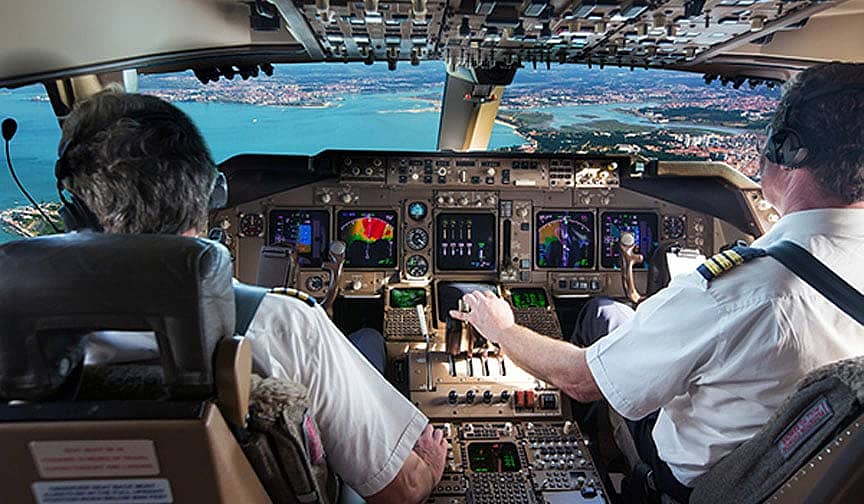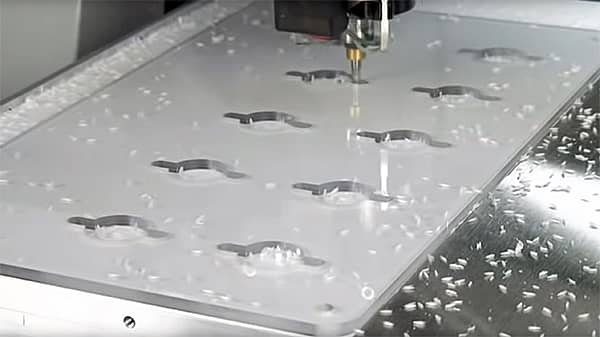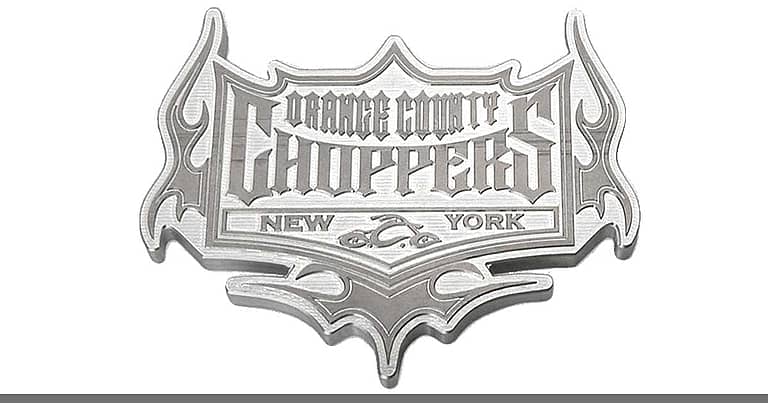Aerospace Instruments Made From Military-Grade Material

Aero-Tec Industries, based in Seminole, OK, manufactures a wide variety of aerospace instruments like the internally illuminated control panels for used in fixed wing, rotary wing and simulator applications. A large percentage of these are manufactured to be compatible with night vision goggles, so special lamp filtration and paints are required. In fact, aerospace instruments made from military-grade material have a number of special requirements.
In 2005, Aero-Tec President, Charles Harbert, set out to find a CNC machine capable of batch machining illuminated displays for aircraft communications gear from cast acrylic. But these were to be no ordinary displays and to produce them to exacting specifications Aero-Tec would need an extraordinary piece of equipment.
Making Illuminated Aerospace Instruments
According to Harbert, “Encapsulated within the part are two sealed 5-volt lamp modules — one provides backlighting for UHF and the other [at the top] illuminates the display that sits behind a clear window. The lamp modules are filtered in order to be compatible with night-vision goggles worn by military pilots … and the lettering at the bottom is non-illuminated.”
The parts above include a completed part (minus the two wires that come out of the recessed terminals on the back) and the two other parts show the innards and illustrate the complicated steps required for manufacturing this part.

When Aero-Tec found DATRON Dynamics, Harbert’s hope for superior technology was bolstered when he saw DATRON’s high-speed machining centers…and perhaps more importantly, the smorgasbord of integrated features that smacked of a real turn-key solution. “In particular,” said Harbert, “I was interested in how DATRON’s high-speed technology and integrated vacuum table could impact our efficiency and the overall quality of our entire product line.”
In fact, DATRON’s VacuMate™ workholding ultimately had as much to do with Aero-Tec’s success with this particular aerospace part as the 60,000 RPM machining technology itself. VacuMate is designed to swiftly and efficiently secure flat workpieces to the bed of a machining system. Thin stock, which could be secured only with great difficulties before, can be secured literally within seconds. This includes plastic foils as thin as 0.001” or aluminum sheets up to 0.250” thick. The vacuum table features airflow-optimized ports, with recessed chambers, to provide superior vacuum distribution. A low cost, gas-permeable substrate serves as a sacrificial vacuum diffuser, allowing the cutter to machine through the workpiece, without cutting into the table. When placing a single 18”x12” VacuMate segment (or up to 4 connected segments for a total of 24” x 36”) on the machine bed, the same position is maintained every time. That’s because the VacuMates are keyed using a beveled boss-in-cavity system to ensure location repeatability.
It was this integration that convinced Aero-Tec to procure the DATRON machining system complete with 3D probing and VacuMate — and Harbert and the R&D group went right to work on perfecting the process.
According to DATRON Dynamics President, Bill King, “Most CNC manufacturers just don’t get involved in workholding. They sell you their machine and let you find a way to hold your parts once it arrives. Well, DATRON takes a more holistic approach and considers workholding part of the overall solution.”

Military-grade Aerospace Instruments
The first step was to batch machine or “cookie cut” a 24” x 36” sheet of military grade cast acrylic to create the back side of the part. Using a QuadraMate™ (4 connected VacuMate segments), the material is secured. The probe scans the surface of the material to validate the position of the blank while at the same time feeding any irregularities into DATRON’s controller. Any surface irregularities are compensated for dynamically in the machining parameters — without operator intervention and before the machining even begins. This ensures that despite variances in thickness, the depth of the cut will stay the same. This is critical for this aerospace part and for Aero-Tec since they machine into the acrylic within four thousandths shy of breaking through the material. After cutting the basic “blanks” for the aerospace instruments, the individual parts are resecured on the vacuum chuck for the milling of clearance cuts to accommodate the electrical terminals on the face side.

The parts for the aerospace instruments are removed from the machine bed and two special terminals are installed from the face side and potted in place with catalyzed polyester. The excess potting material is wet sanded away to leave the face smooth. Next, the lamp assemblies and the associated wiring are installed with special care being paid to its position so that the electronics are not severed during subsequent phases of production performed on the DATRON high-speed machining center. Then these components get potted again with polyester to secure them in place.
The parts are placed back on the machine and secured with the vacuum fixture so all of the detailed features that appear on the back can be machined — the rectangular window is cut down to the step. Then the operator flips the part over and places it in a dedicated fixture on a separate station within the DATRON machine’s working envelope. Here, the window through cut is finished, a bevel around the opening is machined, and the shoulder is cut using a ballnose endmill. An additional clamp is placed in the through hole (window) to hold the part while the periphery is cut — freeing the part from the block of military acrylic.
The individual displays for the aerospace instruments then go through a painting process — black over white. After paint, lettering is applied with a diode-pumped laser system that ablates the black paint to expose the white underneath. The DATRON machining center was used to fabricate the registration fixture required for the laser system.
The parts are returned to the DATRON machine where the black and white layers of paint are milled away on the top wall of the window opening on the back side. This allows NVG secure light to spill onto the display that will be installed behind the window. Finally, the window itself (also machined from cast acrylic on the DATRON) is glued in and the wires are soldered in and potted. The Aero-Tec design allowed for the wires to go in last so that the DATRON machine operators don’t have to struggle with them during the various machining processes. Harbert sings the praises of DATRON’s durability by saying, “I really cannot attest to the quality of the DATRON service department because a year and a half into this project the machine hasn’t hiccupped once — so we haven’t needed any service … which is exceptional.”
Further, he explains, “It’s amazing how much work goes into aerospace instruments or a finished military part. But, if that’s what keeps us all safe then it’s worth the effort — and if the quality of this part is critical to that safety, then DATRON is literally a lifesaver.”

Aerospace
Aero-Tec Industries, based in Seminole, OK, manufactures a wide variety of internally illuminated control panels.
Find a highly precise CNC system to mill composites and plastics for illuminated instrument and control panels.




